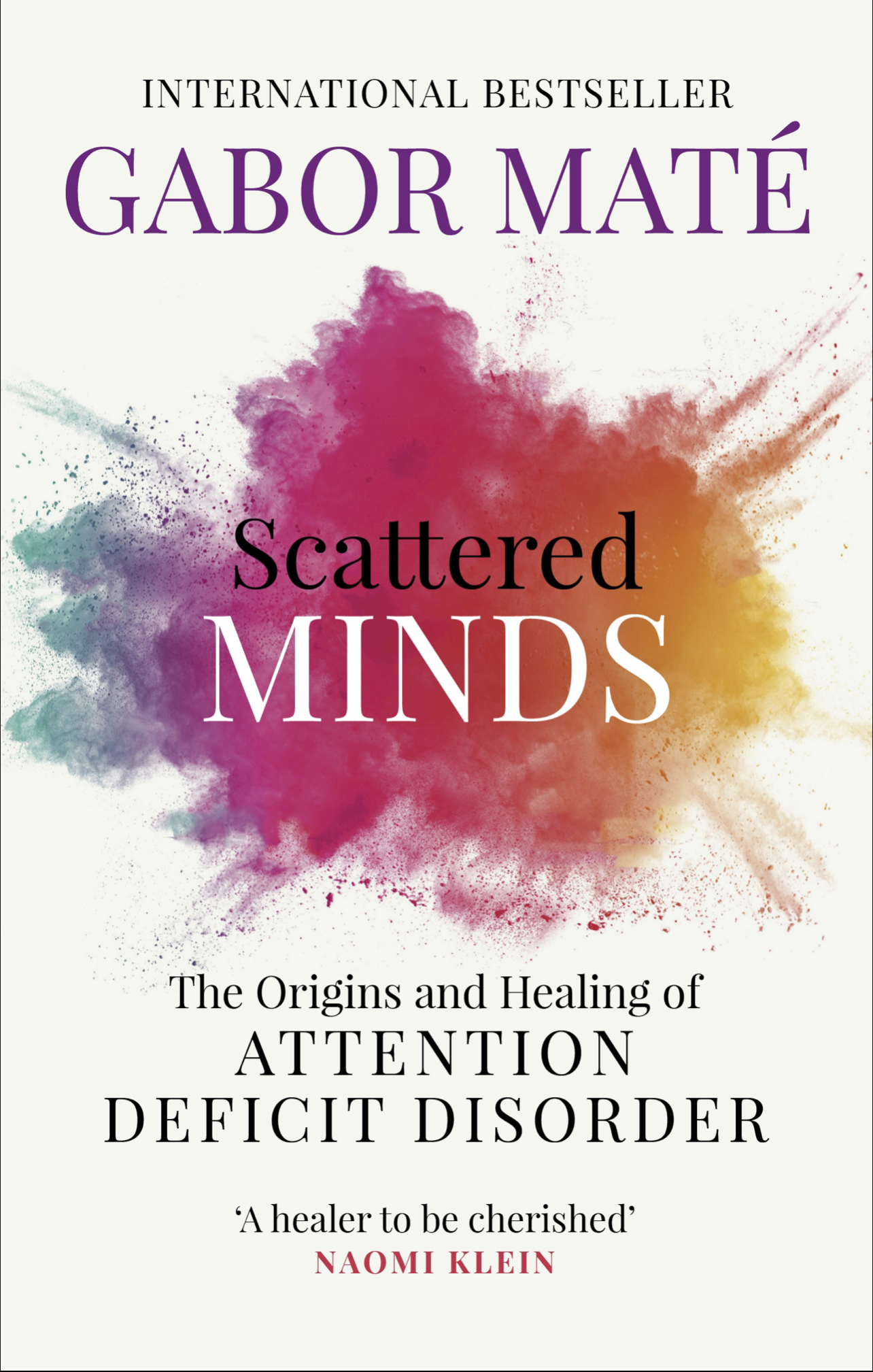← Scattered Minds The Origins and Healing of Attention Deficit Disorder
Scattered Minds The Origins and Healing of Attention Deficit Disorder Chapter 10. The Footprints of Infancy
Author: Gabor Mate Publisher: England, London: Random House. Publish Date: 1999 Review Date: 2022-5-3 Status:📚
Annotations
98
A vast body of research supports this understanding of the functions of the right prefrontal cortex. Most dramatic to observe are the deficiencies and impairments suffered by people who have been injured in this area of the brain.3 Their behavior and emotional reactions are like a textbook description of ADD. Among other ADD-like features, these so-called prefrontal patients often digress and have to be frequently reminded to finish a line of thought; are easily distracted; when listening, will often shift attention to whatever snippet of speech catches their interest; during tasks will often seem to lose track of what the instructions were; will be given to childish emotional outbursts; will have difficulty inhibiting their physical impulses; will find it nearly impossible to learn from experience.
- “There are many subtle ways in which disruptions in electrical and chemical functions can adversely affect a brain region, with lesions being just an extreme example of this,” the psychologist and neuroscientist Joseph LeDoux points out. (LeDoux, 250.)
98
Sustaining physical damage, such as an injury to the brain, is not the only way that the chemical and electrical functions of the prefrontal cortex may become disrupted. In ADD there is no brain damage, but there is impaired brain development. As I wrote in an earlier chapter, it is not that a disorder develops, but that certain important brain circuits do not develop. Interference with the conditions required for the healthy development of the prefrontal cortex, I believe, accounts for virtually all cases of ADD. Emotional interactions stimulate or inhibit the growth of nerve cells and circuits by complicated processes that involve the release of natural chemicals. To give a somewhat simplified example, when “happy” events are experienced by the infant, endorphins—“reward chemicals,” the brain’s natural opioids—are released. Endorphins encourage the growth of nerve cells and of connections between them. Conversely, in animal studies, chronically high levels of stress hormones such as cortisol have been shown to cause important brain centers to shrink.
99
Emotions affect not only the release of brain chemicals in the short term but also the long-term balance of neurotransmitters, the molecular messengers telegraphing electrical impulses from one nerve cell to another. Just as the infant’s early interactions with the nurturing caregivers help to shape the structure of brain centers and circuits, so, too, do they play a role in determining the chemistry of the brain. Throughout the human life span there remains a constant two-way interaction between psychological states and the neurochemistry of the frontal lobes, a fact that many doctors do not pay enough attention to. One result is the overreliance on medications in the treatment of mental disorders. Modern psychiatry is doing too much listening to Prozac and not enough listening to human beings; people’s life histories should be given at least as much importance as the chemistry of their brains.
101
Environmental influences also affect dopamine. From animal studies, we know that social stimulation is necessary for the growth of the nerve endings that release dopamine and for the growth of receptors that dopamine needs to bind to in order to do its work. In four-month-old monkeys, major alterations of dopamine and other neurotransmitter systems were found after only six days of separation from their mothers. “In these experiments,” writes Steven Dubovsky, Professor of Psychiatry and Medicine at the University of Colorado, “loss of an important attachment appears to lead to less of an important neurotransmitter in the brain. Once these circuits stop functioning normally, it becomes more and more difficult to activate the mind.”5 A neuroscientific study published in 1998 showed that adult rats whose mothers had given them more licking, grooming and other physical-emotional contact during infancy had more efficient brain circuitry for reducing anxiety, as well as more receptors on nerve cells for the brain’s own natural tranquilizing chemicals.6 In other words, early interactions with the mother shaped the adult rat’s neurophysiological capacity to respond to stress. In another study, newborn animals reared in isolation had reduced dopamine activity in their prefrontal cortex—but not in other areas of the brain. That is, emotional stress particularly affects the chemistry of the prefrontal cortex, the center for selective attention, motivation and self-regulation. Given the relative complexity of human emotional interactions, the influence of the infant-parent relationship on human neurochemistry is bound to be even stronger. In the human infant, the growth of dopamine-rich nerve terminals and the development of dopamine receptors is stimulated by chemicals released in the brain during the experience of joy, the ecstatic joy that comes from the perfectly attuned mother-child mutual gaze interaction. Happy interactions between mother and infant generate motivation and arousal by activating cells in the midbrain that release endorphins, thereby inducing in the infant a joyful, exhilarated state. They also trigger the release of dopamine. Both endorphins and dopamine promote the development of new connections in the prefrontal cortex. Dopamine released from the midbrain also triggers the growth of nerve cells and blood vessels in the right prefrontal cortex and promotes the growth of dopamine receptors. A relative scarcity of such receptors and blood supply is thought to be one of the major physiological dimensions of ADD. The letters ADD may equally well stand for Attunement Deficit Disorder.
